Comparing Flap Discs: Choosing the Right Material, Type, and Shape
Choosing the right flap disc involves more than just selecting the grit size. Understanding the different abrasive materials, disc types, and shapes available is key to optimizing performance for specific applications.
Comparing flap discs requires looking at the abrasive grain type (Aluminum Oxide, Zirconia Alumina, Ceramic Alumina), the backing plate material (Fiberglass, Plastic, Aluminum), the disc type (Type 27 flat, Type 29 conical), and the flap configuration (standard, high-density). Each variation is designed for different materials, aggression levels, and desired finishes, impacting the disc’s lifespan and efficiency.
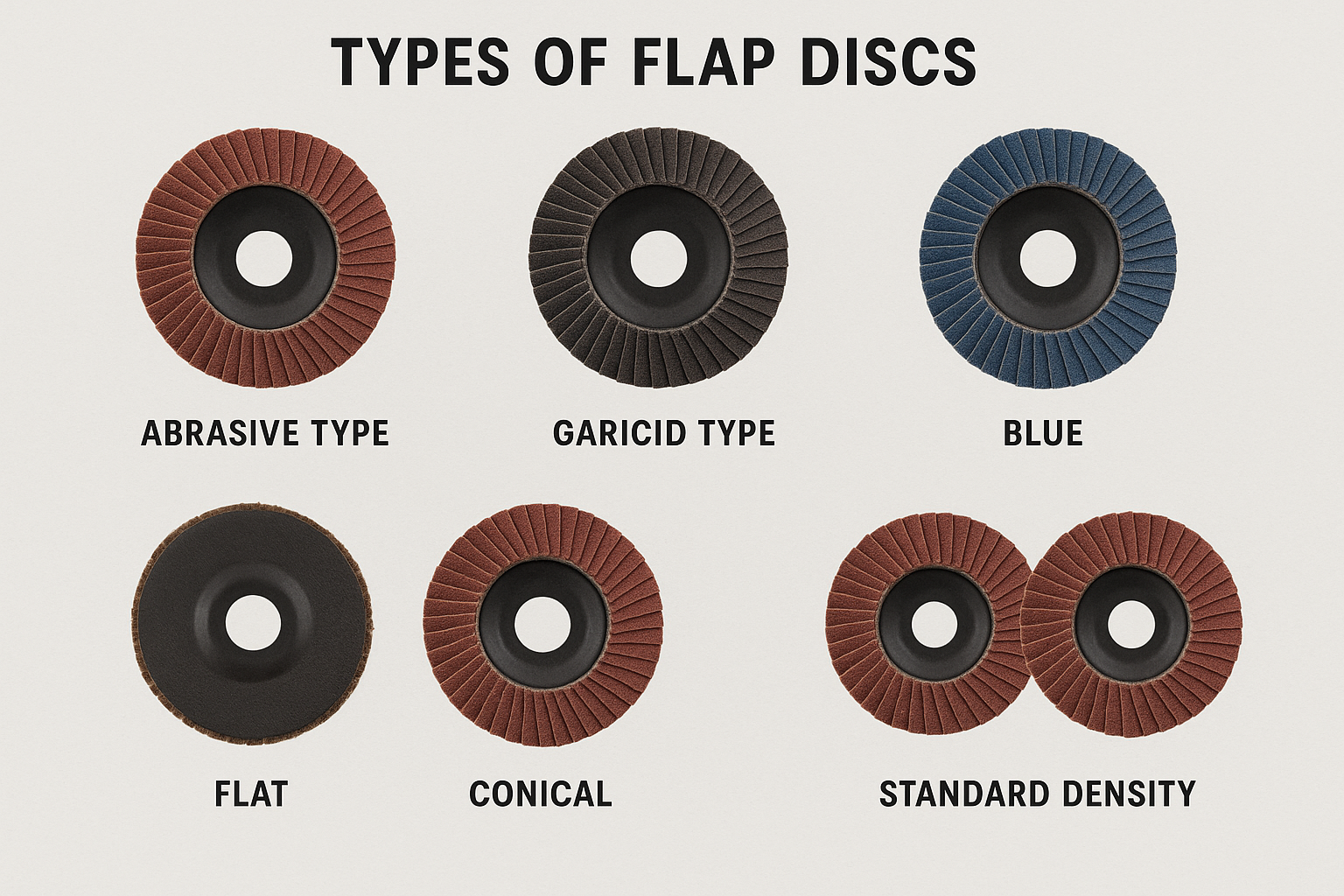
A visual guide to different types of flap discs.
Matching these characteristics to your task ensures you get the best results and value from your abrasive.
What is the best material for flap discs?
With different abrasive materials available, which one performs best? Does "best" depend on what you’re grinding?
There is no single "best" abrasive material for all flap discs, as the ideal choice depends on the material being ground. Aluminum Oxide is cost-effective for general-purpose use on wood and soft metals. Zirconia Alumina is better for stainless steel and harder metals, offering good durability and a blend of aggression and finish. Ceramic Alumina is the premium choice for fast, cool cutting and extended life on tough metals and alloys.
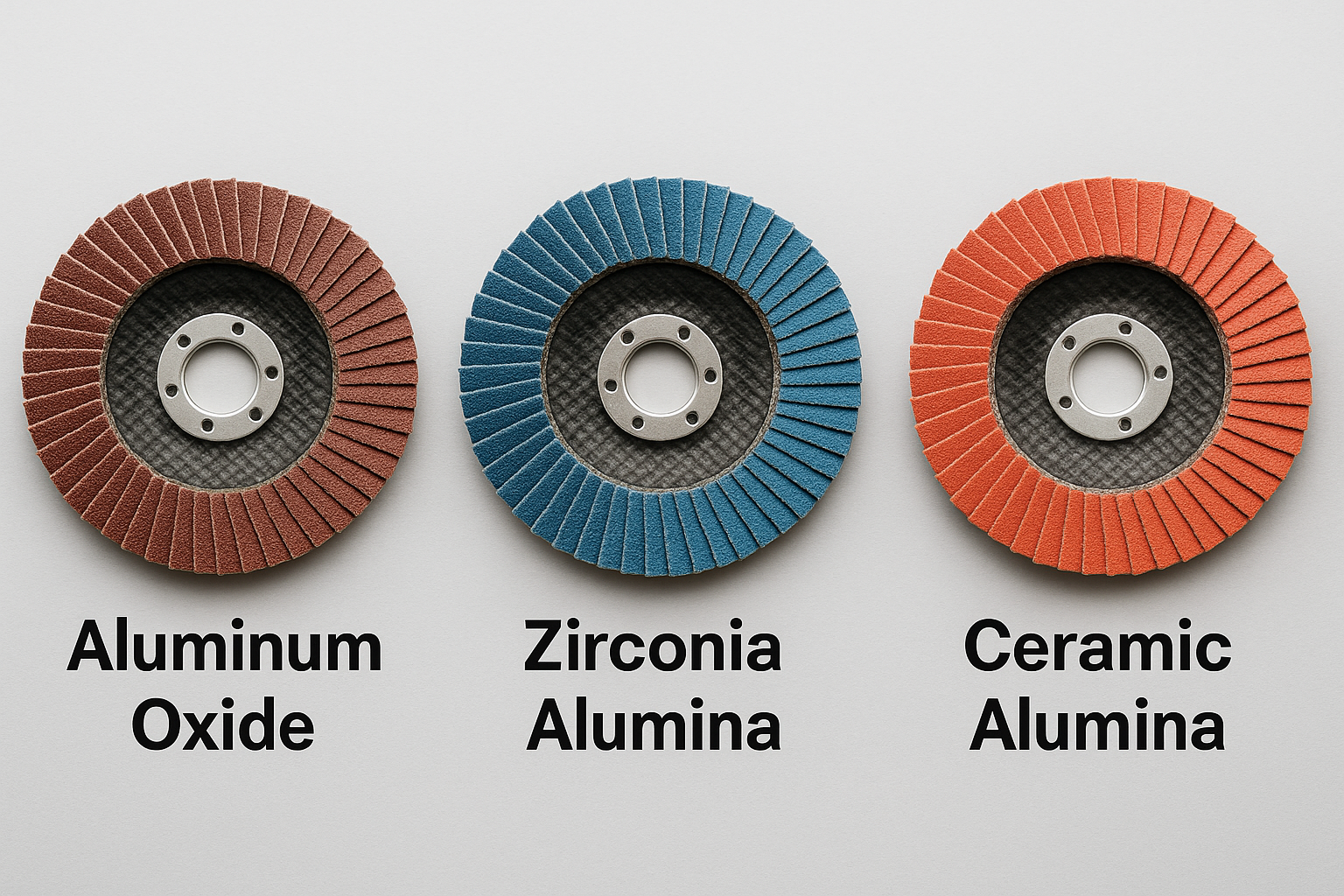
Identifying flap discs by their abrasive material.
The abrasive grain is the heart of the flap disc; it’s what actually does the cutting. Different materials have different properties suited for various applications. Aluminum Oxide (AO) is the most common and economical abrasive. It fractures easily, creating new cutting edges, but wears relatively quickly, especially on hard metals. It’s a good choice for general grinding, deburring, and stock removal on mild steel, wood, and some plastics. Zirconia Alumina (ZA or Zirc) is tougher and more durable than aluminum oxide. Its grains are self-sharpening under pressure, making it effective on stainless steel, carbon steel, and other harder metals. Zirconia flap discs offer a good balance of aggression and lifespan and are a popular choice for metal fabrication shops. Ceramic Alumina (Ceramic) is the most advanced abrasive grain. Its micro-crystalline structure allows the grains to fracture in a controlled way, continuously creating sharp points throughout the grain’s life. Ceramic flap discs cut exceptionally fast and coolly, making them ideal for grinding tough alloys, stainless steel, and heat-sensitive materials. They also offer the longest lifespan but are typically the most expensive. At NOVOGRIT, we understand the importance of the right abrasive, which is why we offer flap discs with these different materials, allowing customers to select the optimal performance for their specific metalworking needs.
What are the differences in use and application for flap discs vs hard discs on an angle grinder?
When should you choose a flap disc over a hard grinding wheel on an angle grinder, and vice versa?
The differences in use and application for flap discs versus hard grinding discs (grinding wheels) on an angle grinder are based on their rigidity and cutting action. Hard grinding discs are rigid, thick wheels used for aggressive, heavy stock removal, cutting, and shaping where speed is paramount and finish is secondary. Flap discs are flexible, made of overlapping abrasive flaps, and are used for blending, deburring, finishing, and lighter grinding where a smoother surface finish is desired and excessive heat buildup needs to be minimized.
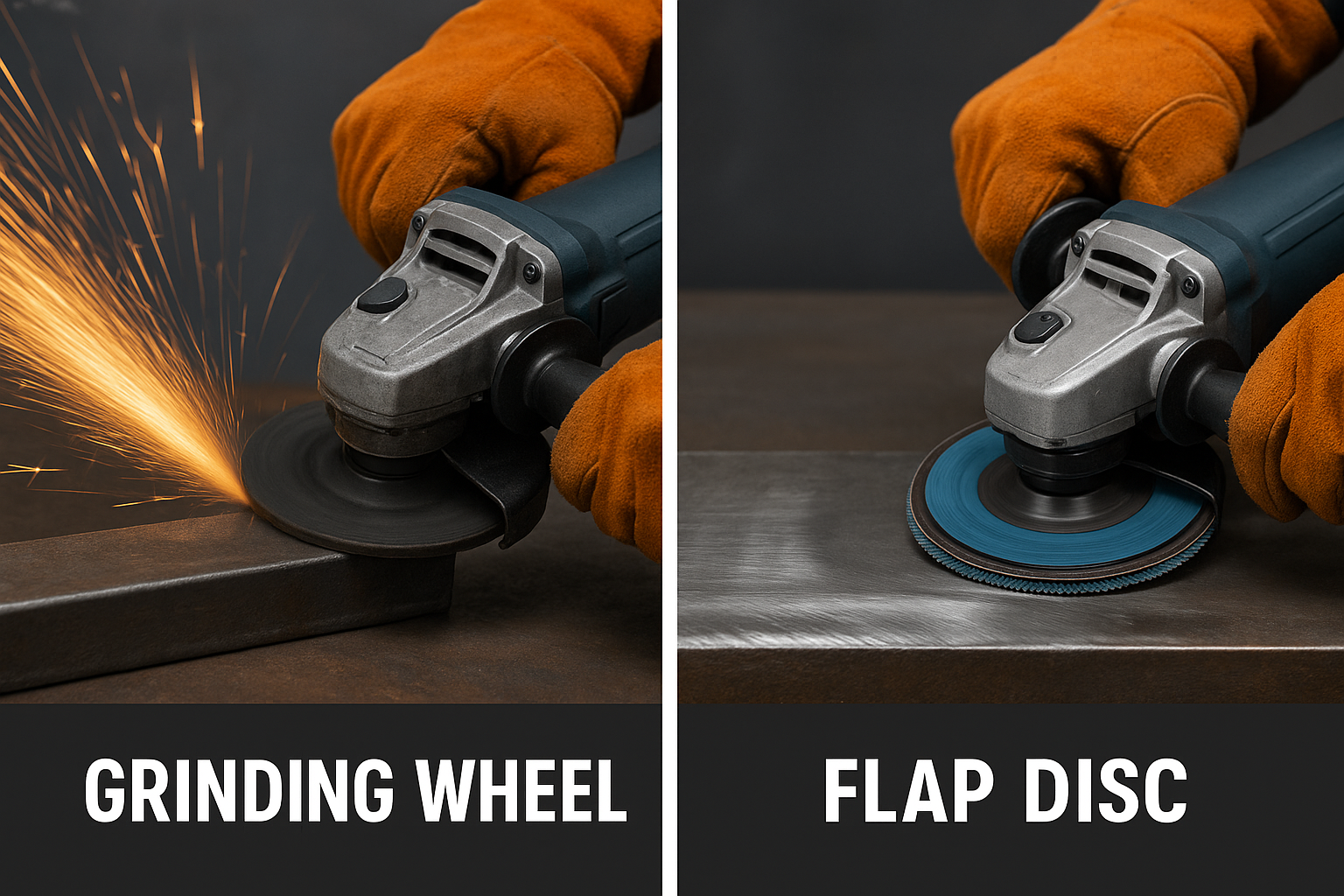
Demonstrating the use cases for grinding wheels and flap discs.
Think of grinding wheels as the workhorse for brute force material removal. They are designed to aggressively cut through metal or stone, taking down significant volume quickly. This is ideal for preparing welding joints (beveling), removing large amounts of excess weld material, or cutting steel plate. The rigid nature means they don’t conform to the surface, so achieving a smooth finish is difficult, and they can easily gouge the material if you’re not careful. Flap discs, with their flexible flaps, offer a much more refined action. While they do remove material, they blend it out as they go. This makes them perfect for tasks like smoothing down welds to be flush with the surface, removing mill scale or rust without significantly altering the base metal thickness, deburring sharp edges, and preparing surfaces for painting or coating. The flexibility allows them to work well on contoured surfaces. Because the contact area is smaller and the flaps allow for better airflow, flap discs tend to run cooler than grinding wheels, which is beneficial when working with heat-sensitive materials like thin stainless steel. In essence, if you need to remove a lot of material fast, use a grinding wheel. If you need to blend, finish, and remove some material with less aggression and heat, reach for a flap disc. NOVOGRIT offers high-performance options for both.
What is the difference between a type 27 and type 29 flap disc?
Flap discs often come labeled as Type 27 or Type 29. What do these designations mean, and how do they affect usage?
The difference between a Type 27 and Type 29 flap disc lies in the shape and angle of the disc face. A Type 27 flap disc is flat, designed to be used at a low angle (0-15 degrees) relative to the workpiece, primarily for finishing and blending. A Type 29 flap disc has a conical or slightly angled face, designed to be used at a steeper angle (15-25 degrees), which provides more aggressive stock removal.
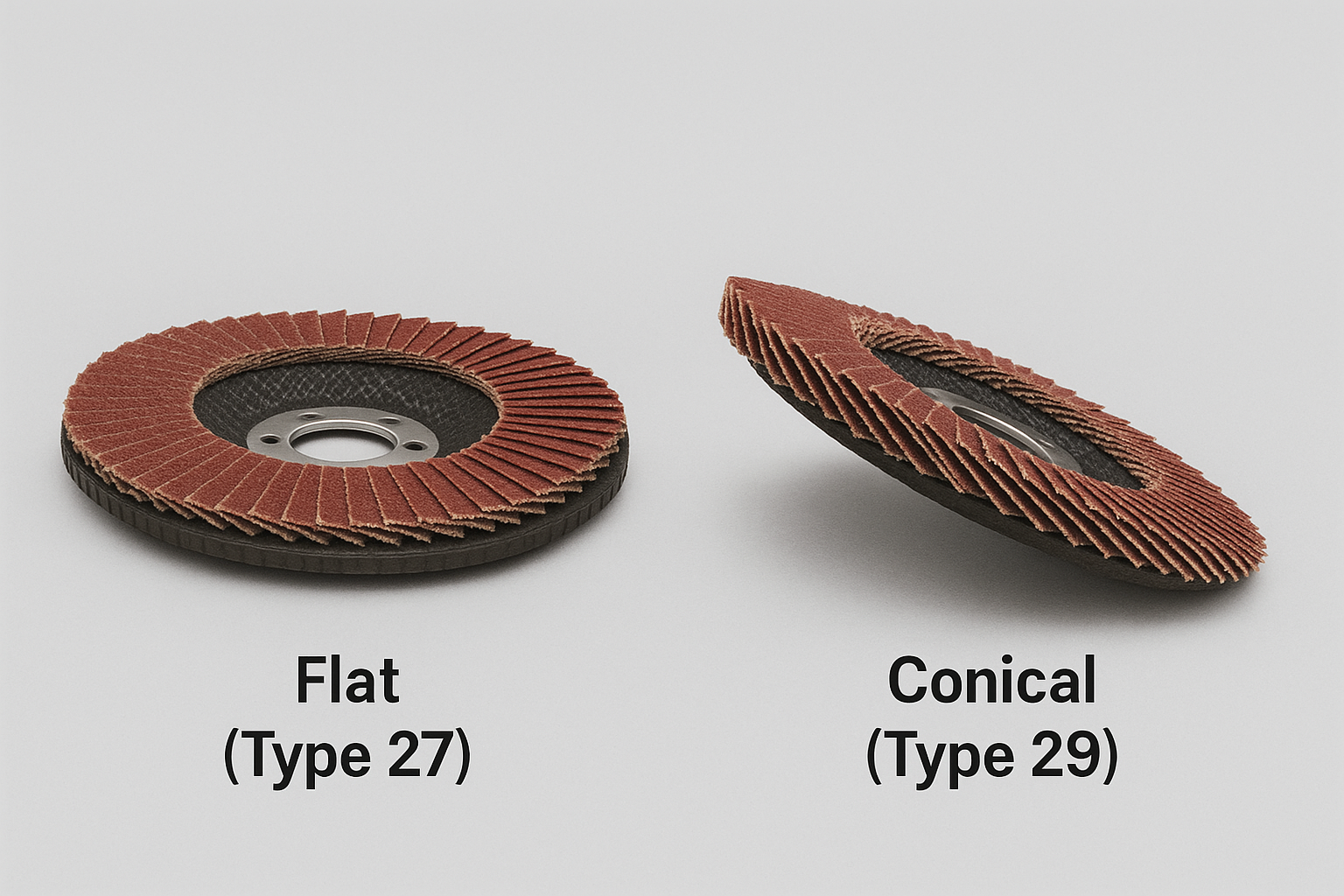
Visual difference between a Type 27 and Type 29 flap disc.
These type designations relate to the shape of the disc’s backing plate, which dictates the optimal working angle. A Type 27 backing is flat, like a typical grinding wheel. When using a Type 27 flap disc, you hold the grinder at a shallow angle, allowing the outer edges of the flaps to make contact with the surface. This low angle is ideal for flattening surfaces, blending out marks, and achieving a smooth finish. The contact area is relatively large, which helps with blending but is less aggressive for initial material removal. A Type 29 backing is angled, forming a cone shape. When using a Type 29 flap disc, you hold the grinder at a steeper angle. This angle concentrates the pressure onto a smaller contact area, typically the leading edge of the flaps, resulting in more aggressive material removal and faster cutting speed. Type 29 discs are preferred when the primary goal is rapid stock removal, shaping, or grinding down substantial welds. Because the angle allows for more aggressive action, they are often used with coarser grits. While a Type 27 is better for finishing, a Type 29 is better for speed and initial grinding. Many users keep both types on hand for different stages of a project. NOVOGRIT produces both Type 27 and Type 29 flap discs with various abrasives to meet different grinding and finishing needs.
What is the difference between flat and conical flap discs?
This question is very similar to the previous one, but let’s rephrase to ensure clarity and cover the core distinction.
The difference between flat and conical flap discs lies solely in the shape of their backing plates and the recommended working angle, which impacts their grinding performance. Flat flap discs (Type 27) have a flat backing and are used at a low angle for blending, finishing, and working on flat surfaces. Conical flap discs (Type 29) have an angled backing and are used at a steeper angle for more aggressive stock removal and shaping, concentrating pressure on a smaller area.
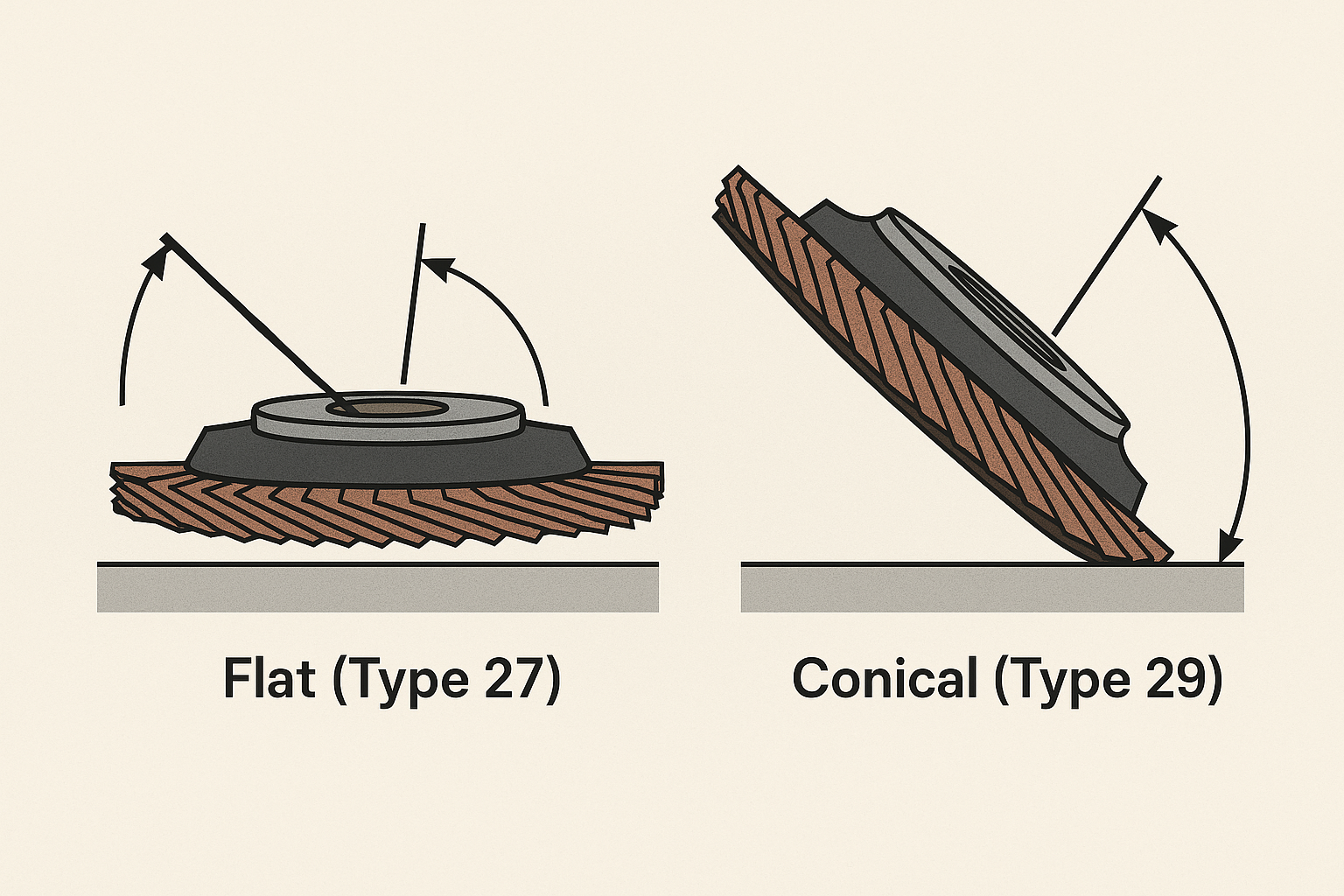
Illustrating the working angle difference for flat and conical flap discs.
Yes, this distinction comes back to the Type 27 and Type 29 designations. "Flat" corresponds to a Type 27 disc, and "Conical" corresponds to a Type 29 disc. The shape of the backing plate directly influences the angle at which the abrasive flaps engage the workpiece. With a flat (Type 27) disc, the largest contact area and most efficient sanding occur when the grinder is held nearly parallel to the surface, around 0 to 15 degrees. This broad contact area helps to feather and blend, leaving a smoother finish with less localized heat. It’s excellent for surface preparation and cleaning large, relatively flat areas. With a conical (Type 29) disc, the angled shape lifts the center of the disc away from the work surface. This allows you to hold the grinder at a steeper angle (15 to 25 degrees), focusing the grinding pressure onto a smaller portion of the flaps near the outer edge. This concentrated pressure results in a more aggressive cut, faster material removal rate, and is better for shaping, grinding into corners, and working on contours where you need to remove more material. While both types of flap discs are versatile, choosing between flat and conical allows you to optimize your grinding based on whether your priority is aggressive removal (conical/Type 29) or smooth finishing and blending (flat/Type 27). Quality manufacturers like NOVOGRIT produce both shapes to offer flexibility to users.
Conclusion
Choosing the right flap disc means considering abrasive type (Aluminum Oxide, Zirconia, Ceramic), shape (flat Type 27 for finishing, conical Type 29 for aggressive grinding), and comparing their uses against hard grinding wheels based on the need for removal vs. finish. Matching these factors ensures optimal performance.
You may also be interested in:
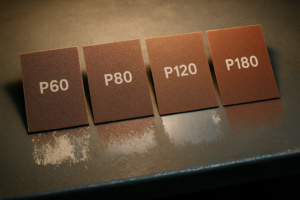
Best Sandpaper for Paint Removal: Grits, Types, & Tips | NOVOGRIT
What is the Best Sandpaper for Removing Paint? Are you tired of staring at chipped, peeling paint on your furniture, walls, or even your car? It’s a common problem, and

Automotive Wet Sanding: Supplies, Liquids & Best Sandpaper
Automotive Wet Sanding Supplies: What Do You Really Need? Wet sanding is a crucial technique in automotive refinishing, used to achieve a flawlessly smooth surface before painting or polishing. Unlike
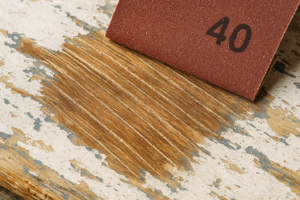
Best Sandpaper for Paint Removal & Grit Guide
What Is the Best Sandpaper for Removing Paint? Removing old paint can be a tedious job, but using the right sandpaper makes all the difference. It’s not just about grit;
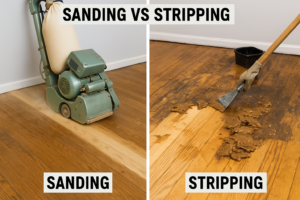
Hardwood Floor Sanding: Screen vs. Sandpaper & Best Practices
Sanding Screen vs. Sandpaper for Hardwood Floors: Which is Best? When you’re tackling hardwood floor projects, choosing the right abrasive is crucial for achieving a smooth, professional finish. Both sanding
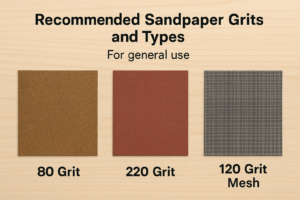
Paper Backing vs. Mesh Sanding Discs: Which Abrasive to Choose?
Paper Back vs. Mesh Sanding Discs: Which One Should You Pick? Choosing the right sanding disc backing can significantly impact your project’s efficiency and finish quality. Paper-backed discs are a
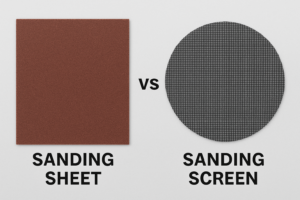
Sanding Mesh vs Paper: Which is More Economical and Better?
Is Sanding Mesh More Economical Than Sandpaper? Comparing Abrasive Costs When stocking up on abrasives, cost is always a factor. Paper sandpaper has traditionally been the standard, but newer mesh
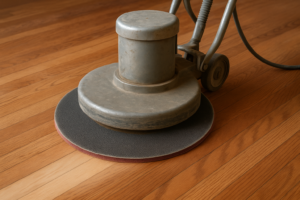
Sanding Nets & Screens Use Cases: When to Choose Mesh Abrasives
Sanding Nets and Screens: What Are Their Best Use Cases? When you encounter sanding nets or screens, you might wonder where they fit into your sanding projects. Unlike traditional solid-backed
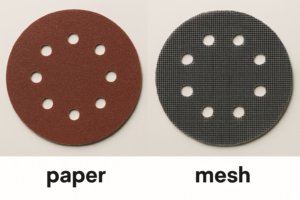
Paper vs. Mesh Sanding Discs: Which Abrasive to Choose?
Paper vs. Mesh Sanding Discs: Which Should You Buy? Choosing the right abrasive disc is essential for efficient and effective sanding. Two primary types dominate the market: traditional paper-backed discs
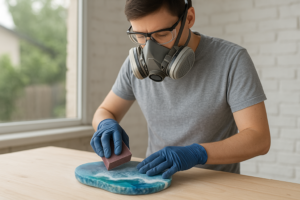
Is Sanding Cured Resin Dangerous? Safety Risks & How to Stay Safe
Is Sanding Resin Dangerous? Understanding the Risks and Staying Safe Working with resin has become incredibly popular for crafts, art, and repairs. While the liquid resin itself has specific handling
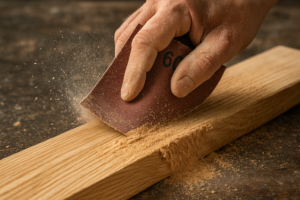
Sandpaper vs. Sanding Screen: Choosing the Right Abrasive Grit & Type
Sanding Screen vs. Sandpaper: A Practical Guide to Abrasive Selection When it comes to surface preparation, sanding is a fundamental step. But the world of abrasives offers more than just
